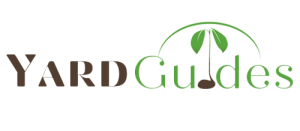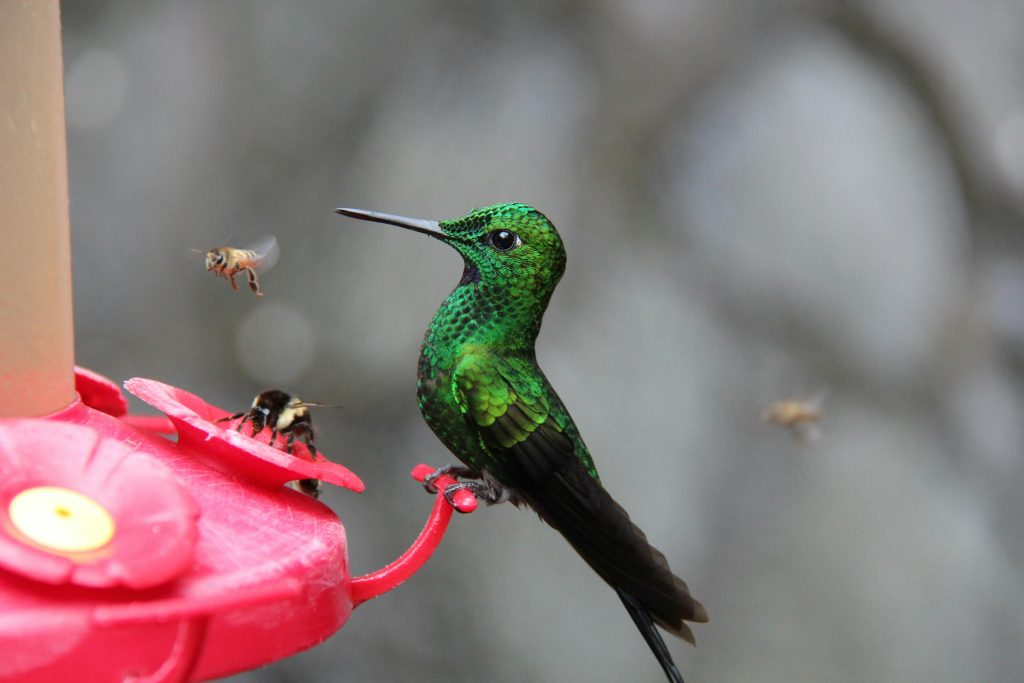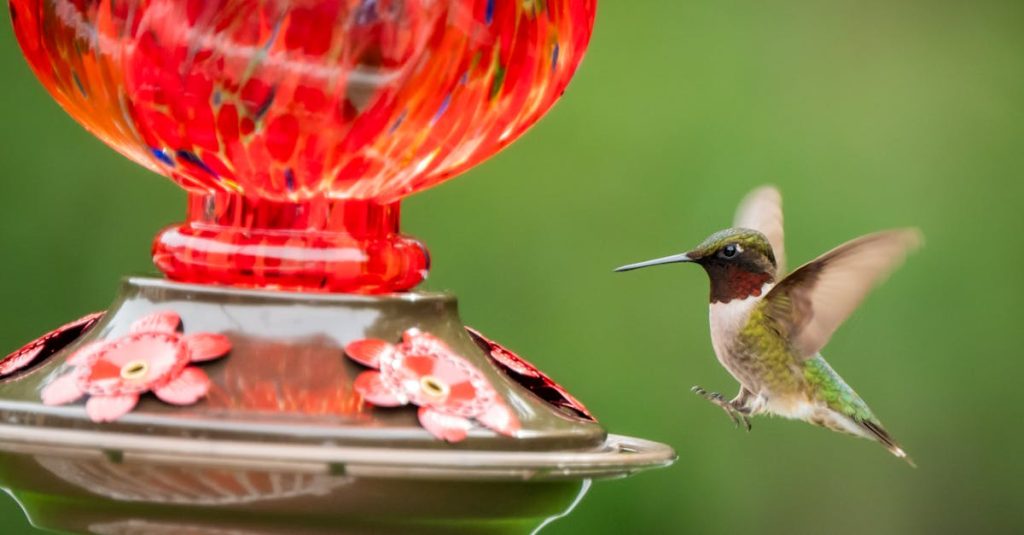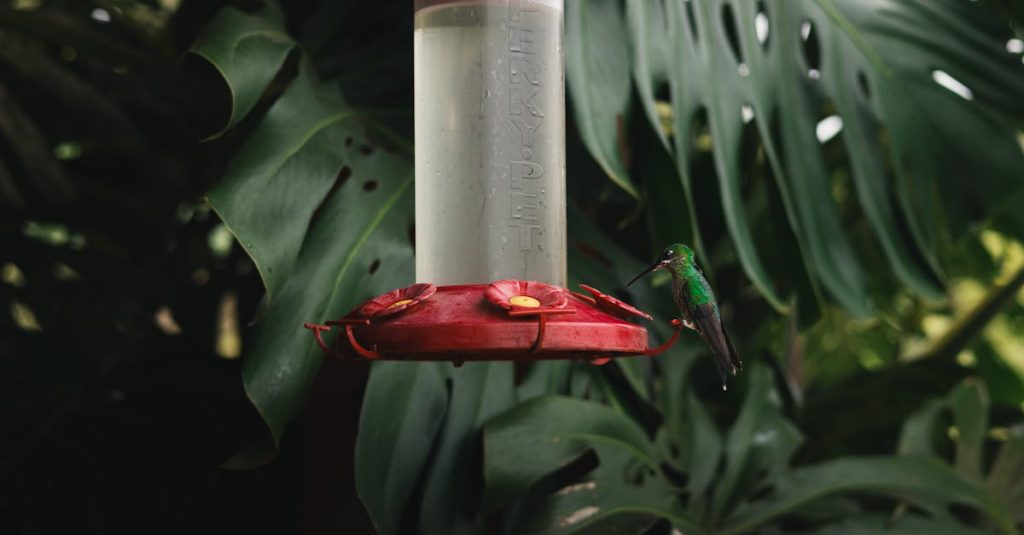Feeding hummingbirds can be a delightful way to observe these fascinating creatures up close. Are Hummingbird Feeders Bad? There’s an ongoing debate about the safety and effects of using hummingbird feeders. Are hummingbird feeders bad for these tiny birds, or are they a helpful supplement to their natural diet? In this article, we’ll explore the pros and cons of using hummingbird feeders, how to ensure they are safe, and what alternatives you might consider.
The Pros and Cons of Hummingbird Feeders

by Treasure Scott (https://unsplash.com/@tesoro19)
Hummingbird feeders can be a valuable resource for these birds, especially during migration and in areas where natural food sources may be scarce. Let’s delve into the advantages and disadvantages of using feeders.
Benefits of Hummingbird Feeders
- Supplemental Food Source: Feeders can provide a steady supply of nectar, especially when flowers are not in bloom or during migration periods when birds need extra energy.
- Observation Opportunities: Feeders bring hummingbirds close to your home, allowing you to observe their behaviors and enjoy their presence.
- Support During Extreme Weather: In harsh weather conditions, such as cold winters, feeders can provide a crucial food source when natural nectar is unavailable.
Potential Drawbacks
- Dependency: There is a concern that hummingbirds might become reliant on feeders and not seek out natural food sources. However, studies suggest they still prefer natural sources when available.
- Disease Transmission: If not cleaned regularly, feeders can harbor mold and bacteria, which can be harmful to hummingbirds.
- Predation Risks: Feeders can make hummingbirds more vulnerable to predators like cats.
Ensuring Hummingbird Feeder Safety

by Joshua J. Cotten (https://unsplash.com/@jcotten)
To ensure that your feeder is a safe and healthy source of food for hummingbirds, follow these guidelines:
Choose the Right Feeder
When selecting a hummingbird feeder, consider these factors:
- Material: Glass feeders are often preferred over plastic as they are easier to clean and don’t degrade over time. However, ensure that glass feeders are sturdy and well-constructed to avoid breakage.
- Design: Opt for a feeder with a built-in ant moat and bee guards to prevent insects from contaminating the nectar.
Proper Maintenance
- Regular Cleaning: Clean your feeder every few days with hot water and a brush. Avoid using soap as it can leave harmful residues.
- Fresh Nectar: Change the nectar every 3-5 days, more often in hot weather, to prevent fermentation and mold growth.
Making Safe Nectar
When preparing nectar, keep it simple:
- Recipe: Mix one part white granulated sugar with four parts water. Boil the water to dissolve the sugar completely, then let it cool before filling the feeder.
- Avoid Additives: Never use honey, artificial sweeteners, or food coloring, as these can harm hummingbirds.
Alternatives to Hummingbird Feeders

by Skyler Ewing (https://unsplash.com/@skylerewing)
If you’re concerned about the potential downsides of feeders, consider these alternatives to attract hummingbirds:
Plant Nectar-Rich Flowers
Create a garden with a variety of nectar-rich flowers that bloom at different times of the year. This provides a natural and continuous food source for hummingbirds. Some popular choices include:
- Bee Balm
- Trumpet Vine
- Salvia
- Fuchsia
Provide Natural Water Sources
Hummingbirds need water for drinking and bathing. Consider adding a birdbath or a small water feature to your garden to attract them.
Common Questions About Hummingbird Feeders
Are Glass Hummingbird Feeders Bad?
Glass feeders are generally safe and preferred by many due to their durability and ease of cleaning. Ensure they are sturdy and free from sharp edges to prevent injury to the birds.
How Can You Tell If Hummingbird Nectar Is Bad?
Spoiled nectar often has a cloudy appearance, a strong odor, or visible mold. Regularly check your feeder and replace the nectar as needed to ensure it’s fresh and safe.
Is It Bad to Feed Hummingbirds in Winter?
Feeding hummingbirds in winter can be beneficial, especially in areas where natural food sources are scarce. Ensure the feeder is clean and filled with fresh nectar, and consider using a feeder heater if temperatures drop significantly.
Conclusion
Hummingbird feeders can be a helpful supplement to a hummingbird’s natural diet, provided they are used and maintained correctly. By following best practices for feeder maintenance and exploring alternatives like planting nectar-rich flowers, you can safely enjoy the presence of these enchanting birds in your yard. Whether you choose to use a feeder or cultivate a hummingbird-friendly garden, your efforts can make a positive impact on their survival and well-being.



